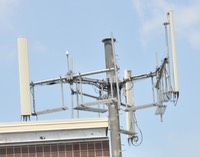This research area examines security and privacy vulnerabilities in modern cellular networks, with a focus on authentication, identity protection, and architectural trust assumptions in 5G and their implications for 6G. The work emphasizes how protocol mechanisms such as Authentication and Key Agreement (AKA), subscription concealment, and identifier management interact with real-world deployment architectures, including disaggregated and virtualized RANs such as Open RAN. A central theme is architecture-aware privacy: understanding how distributing control-plane functions, exposing new interfaces, and relaxing traditional trust boundaries can amplify privacy leakage and attack surfaces that were previously confined within monolithic network elements. This includes analysis of residual metadata leakage during authentication, limitations of existing privacy protections, and the distinction between protocol-level security guarantees and system-level exposure. The research also addresses adversary models relevant to military and tactical deployments, where assumptions about trusted infrastructure, passive observation, and localized compromise differ from commercial cellular settings, informing more robust and deployment-aware approaches to cellular security.
Matthew C. Valenti
Professor, Lane Department of Computer Science and Electrical Engineering
Copyright 2010-2026 Matthew C. Valenti
